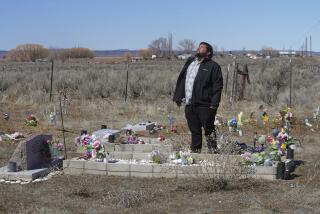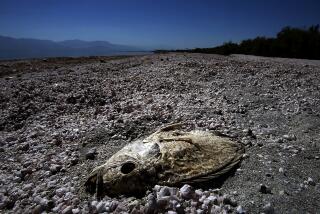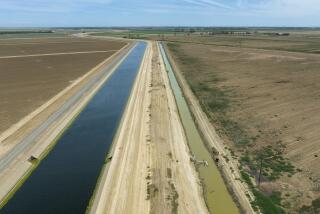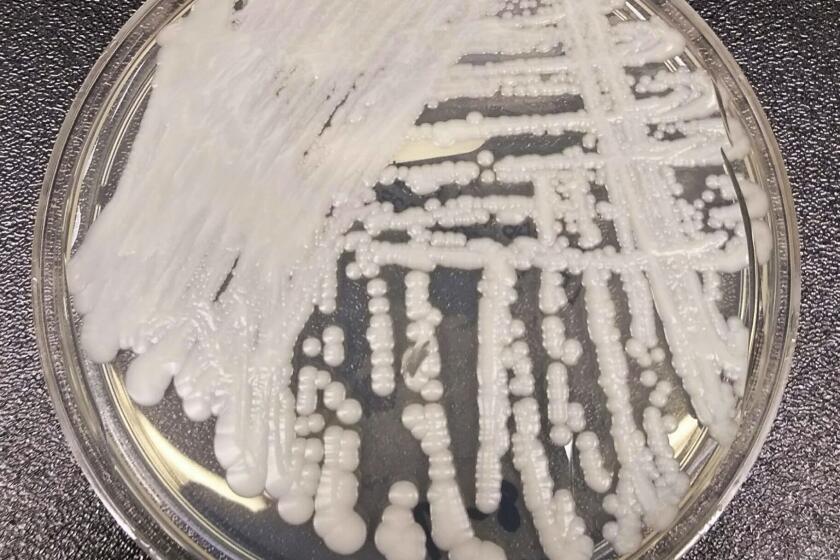Pike’s Return to Lake Stirs Doubts, Dread
- Share via
PORTOLA, Calif. — The deepest well in this town, which has lost a major water source, is the seemingly endless reservoir of anger.
It has been tapped again by the return to nearby Lake Davis of the voracious northern pike--the same razor-toothed predator that state wildlife officials poisoned 19 months ago, sacrificing a town’s drinking water and a struggling rural economy to save the state’s fragile salmon population 130 miles away.
Three pike have been found over the past two weeks in the once pristine alpine lake, and now there’s hell to pay. It’s mostly polite, but hell nonetheless, a mix of anger and frustration, hopes dashed and anxieties raised.
“I would like to remind all of us taxpayers that this debacle cost between $9 million and $14 million already,” said Dr. Chris Stanton, one of nearly 200 concerned residents in this town of just over 2,000 who showed up Thursday night to hear wildlife officials explain themselves. “I was deeply saddened when I heard about the pike, but I was not surprised, unfortunately.”
Origin of Pike Still a Mystery
Along with fish and hot tempers have come television trucks. And fish and game wardens looking into boats and creels. And state watercraft trolling the man-made lake 50 miles northwest of Reno--this time with divers and crack electroshock teams stunning fish in snow and darkness, searching for elusive pike and equally elusive answers.
No one knows where the pike came from, although everyone here wants to find out right now. The state Department of Fish and Game is doing everything in its power to end that uncertainty, but it’s too soon to tell--if it will ever be possible.
Were the pike hardy enough to survive the 16,000 gallons of liquid rotenone and 60,000 pounds of the dry chemical poured into the lake in October 1997, killing almost all other animal life? Or was someone foolhardy enough--criminal enough, crafty enough, downright crazy enough--to plant the notorious fish in the recently cleansed lake?
“Either way,” senior fishery biologist Nick Villa told the townsfolk, “we have a serious problem on our hands.”
The Lake Davis saga began five years ago when, wildlife officials believe, a rogue angler planted the pike--a fish native to the eastern U.S.--in Lake Davis, a top-notch trout fishery a mile high in the Plumas National Forest.
The pike are ferocious feeders, known to eat snakes, ducks and muskrats, in addition to any other fish around. In their natural habitat, the prized game fish, with a reputation for putting up a fierce battle, are known to grow to 20 pounds and 30 inches.
“You’re taking a big chance by letting them come down into the Sacramento-San Joaquin Delta and letting them prey on native fishes--salmon, steelhead, split-tails,” said Peter Moyle, professor of fish biology at UC Davis and an expert on California freshwater fish. “These fish are already on the ropes; to toss one more big problem at them is not good.”
After extended protest by the people of Plumas County, the state Department of Fish and Game poisoned Lake Davis to make sure the pike did not escape and threaten the salmon. The tourism-based economy, hurt by the controversy, skidded further without fishing.
And although the water has tested clean for the poison and its byproducts, the City Council voted not to return to Lake Davis as a water supply yet, because local residents still don’t trust it.
After the state restocked Lake Davis with trophy trout last summer, the economy began to revive. In April, the state began disbursing $9.1 million to local government, residents and business owners who lost money after the chemical treatment. The icy relationship between the people of Portola and the Department of Fish and Game began to thaw.
And now this.
Fears of a Second Poisoning of Lake
The tiny town is in mourning. “There’s the shock when you first hear about it . . . like having the wind knocked out of you after you’ve been through so much the last two years,” said City Administrator James Murphy. “I think I went through a denial, if you will: ‘It has to be a false report.’ ”
It was not a false report, and people are “very angry,” said Linda Hadley, a real estate agent who blames the poisoning for business lost and life disrupted. “And they’re scared.
“Our City Council said they wouldn’t poison [the first time] and they did. They can get away with doing it again.”
In an opinion piece in the Portola Reporter, staff writer Terri Nacar wrote movingly of living through and covering the pike infestation and its aftermath, which caused her hometown to suffer “inside, where it doesn’t show and where money can’t make it better.”
Nacar and her neighbors “knew in our guts that the project would not kill all the pike because of its many flaws,” she wrote. Even though relations have improved between residents and the state government and “some things will be different this time,” the town will relive the entire ordeal now that the pike is back.
“So, if we have a hard time talking about it, trying to hold back the tears, please understand we have been there before,” she wrote. “And it’s a very hard road to walk.”
The anger, said Mayor Bill Powers, who chained himself to a buoy in Lake Davis in an effort to stop the 1997 poisoning, is probably here to stay, no matter what his community does to move on.
“It’s an ache in my heart, too,” Powers said. “But we can’t live with moaning about it. It doesn’t do any good.”
Searching for a Fish --and a Culprit
According to many local officials, the best thing to do now is cooperate with the Department of Fish and Game in its effort to investigate the latest pike infestation and figure out what to do next.
They are quick to point out that it is a different agency dealing with Portola this time around, a chastened government body with a new director (Robert C. Hight, who actually flew in for a Memorial Day visit) and a real investment in reaching out to the residents instead of pushing them around.
“It seems different this time around,” Murphy told the audience Thursday night. “Fish and Game schedules conference calls. They brief us two to three times a day. Now, how can we get that information to you?”
Agents spent Memorial Day weekend canvassing anglers on the lake, checking boats going into and out of the water. They surveyed the ample catch for pike and evidence of pike, such as bite marks on the tails and bellies of rainbow trout.
They plan to canvass every house in the area, handing out information sheets and giving residents private opportunities to pass along information that could lead to a suspect.
On Thursday, George Laret, regional patrol chief for Fish and Game, beseeched the Portola crowd to report any suspicious activity to his agency.
“I do not mean to accuse the sportfishing community or anyone else--except for the person or people who did it,” Laret said delicately. “It’s not our intent to accuse or create paranoia, but if anyone put them back in Lake Davis, I want them to be really paranoid.”
Biologists are also continuing to survey the lake to determine just how many pike may be there and whether or not they’ve already reproduced--the worst-case scenario. Three state divers braved air and water temperatures in the 40s with a fishing spear and an underwater camera Thursday, as Canada geese honked in the blowing snow. The divers came up empty-handed.
Firing powerful electric currents off the backs of boats into the murky waters of Lake Davis to stun and identify fish has also yielded little. But biologist Dennis Lee does not find that heartening. It’s early in the season and the weather recently turned cold, which causes the fish to dive deeper, away from the 8-foot reach of the so-called e-boats.
“If they found three, it can’t be the only three,” Lee said. “That’s too, too, too lucky.”
Without crucial information about the fish population and how it got into the lake this time around--details that won’t be available for months--what to do about the pike is just speculation. They could be managed by limitless fishing or electroshocking. The lake could be drained (a remote possibility) or poisoned again (even more remote).
“Are we going to vote if we have to poison?” a worried Sherry Sebring asked near the end of Thursday’s emotional meeting. “It was so inconceivable last time when you did it. It feels like it’s going to happen again.
“My stomach is in a knot,” she continued. “You’re going to have to do a lot more convincing.”
More to Read
Sign up for Essential California
The most important California stories and recommendations in your inbox every morning.
You may occasionally receive promotional content from the Los Angeles Times.














